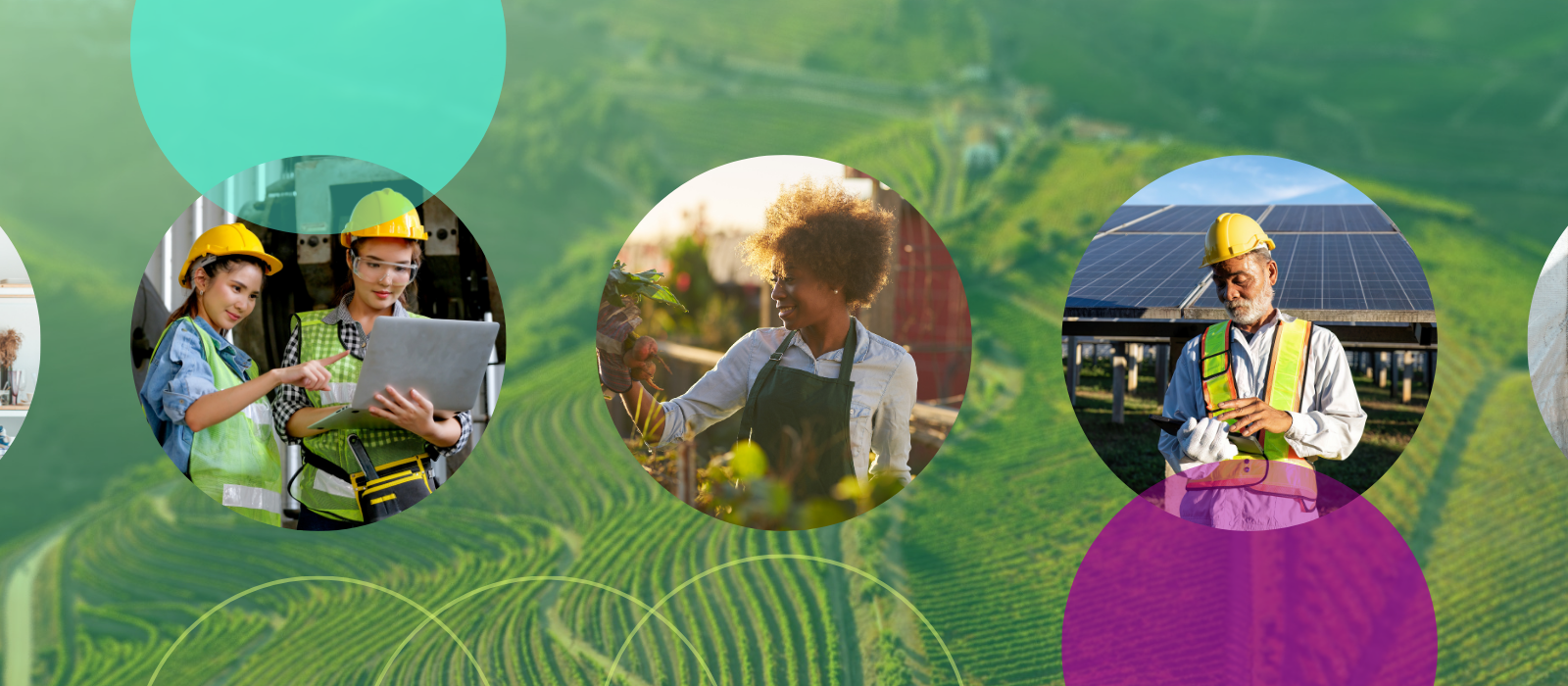Our sustainable future brings both opportunities and challenges for workforce

Recently I was asked to speak about advancing work as it relates to one of the biggest global policy challenges of our time – transforming our economies to avoid the worst impacts of climate change.
I was nervous about delivering this talk. I have not been on the frontlines of the environmental movement. I’m not an entrepreneur trying to bring a clean-tech product to market.
Like many Canadians, I do however, have a sense of urgency around climate change, the net zero target, and how we achieve it. At FSC I’ve been fortunate to be able work with several of our research and implementation partners who are studying the impact of the netzero transition on our workforce.
Green transition can help workers thrive
Research shows that there are very viable scenario in which a transition to net zero helps Canada and its workers thrive. While some worry that decarbonization means job loss, we now have several complex economic models showing what is possible. The last 15 years have revealed a huge amount of progress.
One really interesting study released this past fall shows that some 30 countries have successfully achieved economic growth while at the same time reducing carbon emissions. This includes wealthy nations like Japan and the US, middle-income powers like Mexico, and low-income countries such as El Salvador and Jamaica. Canada has yet to join this club for a variety of reasons, but other countries are showing what is possible
There are a few reasons that these nations have achieved growth while cutting emissions:
1) Technology – Not just wind, solar and batteries – using gas instead of coal for certain processes has driven a great deal of change – and the drive for that technology to become better is continuing.
2) Policies and investment responses – Global policies have pushed countries to change their behaviours – carbon taxes, regulations, etc. have helped accelerate change even if it hasn’t been as aggressive as many would hope.
3) Economic processes will drive decarbonization – The process of adopting new technologies and building the infrastructure needed to integrate them into our economy creates economic activity, and that activity in turn requires workers.
Despite these realities, it’s fair to say that the public has not necessarily understood the opportunity – perhaps because it hasn’t been painted as such. And although there are opportunities, there are also challenges.
The challenges ahead
One main hurdle in getting to net zero is preparing workers and employers for changes to where and how they work. If you have bought a heat pump recently and then struggled to find a qualified technician, or if you have purchased an electric car only to wait ages to find an electrician to install a charging system, you will understand. These are specific bottlenecks, and they will grow as the scale and pace of change begin to take root.
The good news is that many Canadians at risk of job loss in a green shift already possess the skills needed to make the change. With targeted support for training, many of these workers can develop the necessary skills relatively quickly. In detailed research from our colleagues at the Conference Board of Canada, the Smart Prosperity Institute and the Diversity Institute, we find evidence that our workforce is highly skilled and can be transitioned to meet clean-growth needs with a relatively small amount of training. Still, that training takes time and money.
Addressing workers’ needs
Although it’s encouraging to note all the steps that can be taken, some important issues remain. We can’t jump ahead without addressing the needs of those who may be left behind. Preparing current and future workers requires investment and planning. We’ll need to invest in transforming training programs so they are more relevant to the sustainable transition. This is about more than paying tuition – it means addressing how and where training takes place, the cost of living and housing, and other related issues.
Uneven impact of sustainable transition
Workers can be found in every province and territory who are in sectors that will be vulnerable in a net zero world – areas like oil and gas, but also emissions-intensive fields like manufacturing, mining, transportation and support services for these sectors. Indigenous peoples and visible minorities are overrepresented in some of these sectors – think of Indigenous peoples working in northern mines or visible minorities in Alberta’s oil sands.
We know that these individuals already face systemic barriers in the workforce. So, where we find opportunities in new and emerging sectors, there must be a concerted effort to address biases and eliminate practices that exclude people – this is especially true of new and emerging sectors and jobs.
A bright green future
I hope that my messages convey some optimism for the future that is held by many working in this space. This is not a matter of me being a Pollyanna – a naïve optimist. Rather, this is about embracing the necessity of our global moment, advocating for our leaders, and delivering solutions that address the nuts and bolts of various challenges that lay ahead.
Samir Khan is the senior research and evaluation associate at the Future Skills Centre. This blog post has been edited and condensed from his recent presentation at The Walrus Talks in Toronto on the theme of “advancing work”. Watch the full, seven-minute video presentation here.
The views, thoughts and opinions expressed here are the author’s own and do not necessarily reflect the viewpoint, official policy or position of the Future Skills Centre or any of its staff members or consortium partners.




